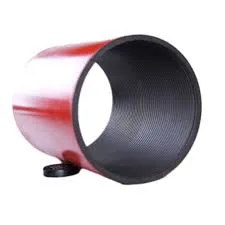- Afrikaans
- Albanian
- Amharic
- Arabic
- Armenian
- Azerbaijani
- Basque
- Belarusian
- Bengali
- Bosnian
- Bulgarian
- Catalan
- Cebuano
- Corsican
- Croatian
- Czech
- Danish
- Dutch
- English
- Esperanto
- Estonian
- Finnish
- French
- Frisian
- Galician
- Georgian
- German
- Greek
- Gujarati
- Haitian Creole
- hausa
- hawaiian
- Hebrew
- Hindi
- Miao
- Hungarian
- Icelandic
- igbo
- Indonesian
- irish
- Italian
- Japanese
- Javanese
- Kannada
- kazakh
- Khmer
- Rwandese
- Korean
- Kurdish
- Kyrgyz
- Lao
- Latin
- Latvian
- Lithuanian
- Luxembourgish
- Macedonian
- Malgashi
- Malay
- Malayalam
- Maltese
- Maori
- Marathi
- Mongolian
- Myanmar
- Nepali
- Norwegian
- Norwegian
- Occitan
- Pashto
- Persian
- Polish
- Portuguese
- Punjabi
- Romanian
- Russian
- Samoan
- Scottish Gaelic
- Serbian
- Sesotho
- Shona
- Sindhi
- Sinhala
- Slovak
- Slovenian
- Somali
- Spanish
- Sundanese
- Swahili
- Swedish
- Tagalog
- Tajik
- Tamil
- Tatar
- Telugu
- Thai
- Turkish
- Turkmen
- Ukrainian
- Urdu
- Uighur
- Uzbek
- Vietnamese
- Welsh
- Bantu
- Yiddish
- Yoruba
- Zulu
Enhancing Well Casing Integrity with Extended Couplings for Improved Performance and Safety
Understanding Well Casing Extension Couplings
In the oil and gas industry, well casing is crucial for maintaining the integrity of boreholes and ensuring safe and efficient extraction of resources. Well casing extension couplings play a significant role in this process, serving as essential components that help connect different sections of casing pipes. This article will delve into the importance of well casing extension couplings, their functions, and the considerations for their selection and installation.
What are Well Casing Extension Couplings?
Well casing extension couplings are specialized fittings used to join two lengths of casing in a borehole. They are crucial for extending existing casing lines, particularly in deep wells where depth requirements exceed the standard lengths of casing available. Made from high-strength materials, these couplings ensure the structural integrity and pressure resistance required for the harsh environments found in subsurface formations.
Functions of Casing Extension Couplings
1. Structural Support The primary function of an extension coupling is to provide a solid connection between casing sections. This is vital for withstanding the forces exerted by the surrounding soil and rock formations, as well as the pressure from the fluids being extracted or injected.
2. Pressure Management Casing extension couplings are designed to handle high-pressure conditions typical in deep well operations. They maintain the pressure integrity of the well, preventing any potential leaks that could lead to catastrophic failures.
3. Facilitate Fluid Movement These couplings play a role in ensuring that fluid can move efficiently through the wellbore. By maintaining a consistent inner diameter, they minimize restrictions that could hinder the flow of oil, gas, or water.
4. Prevent Contamination Properly installed extension couplings help to protect the well from contamination by isolating different zones within the wellbore. This is especially important in projects where multiple formations may be intersected.
well casing extension coupling

Selecting the Right Coupling
Choosing the right extension coupling involves several considerations
- Material Composition The materials used for couplings should be compatible with both the casing and the formation. Common materials include carbon steel, stainless steel, and specialized alloys designed to resist corrosion and abrasion.
- Pressure Ratings It is essential to select couplings with pressure ratings that match or exceed the anticipated pressures in the well.
- Installation Method The installation process can vary based on the design of the coupling. Some may require welding, while others might use threaded connections. Familiarity with these methods can ensure a robust installation.
- Environmental Factors Consideration of temperature extremes, potential for hydrogen sulfide (H2S) exposure, and other environmental factors is critical. The chosen coupling must be able to withstand these conditions without compromising the well’s integrity.
Conclusion
Well casing extension couplings are integral to the successful completion and operation of oil and gas wells. By providing structural support, managing pressure, and facilitating fluid flow, they ensure the efficiency and safety of extraction processes. When selecting and installing these couplings, careful consideration of material, pressure ratings, and environmental factors will result in optimal well performance. Understanding their importance not only aids engineers and drilling contractors but also contributes to sustainable resource management in the industry.
-
Well Casing Extension Couplings – Applications and InstallationNewsJun.06,2025
-
Types of Crossover Subs in Drilling & CompletionNewsJun.06,2025
-
Key Features of High-Quality Tubing Pup JointsNewsJun.06,2025
-
Installation and Maintenance Tips for Steel Couplings for PipeNewsJun.06,2025
-
How to Select the Right Pup Joint for Oil & Gas OperationsNewsJun.06,2025
-
Applications of Stainless Steel Pipe CouplingsNewsJun.06,2025







